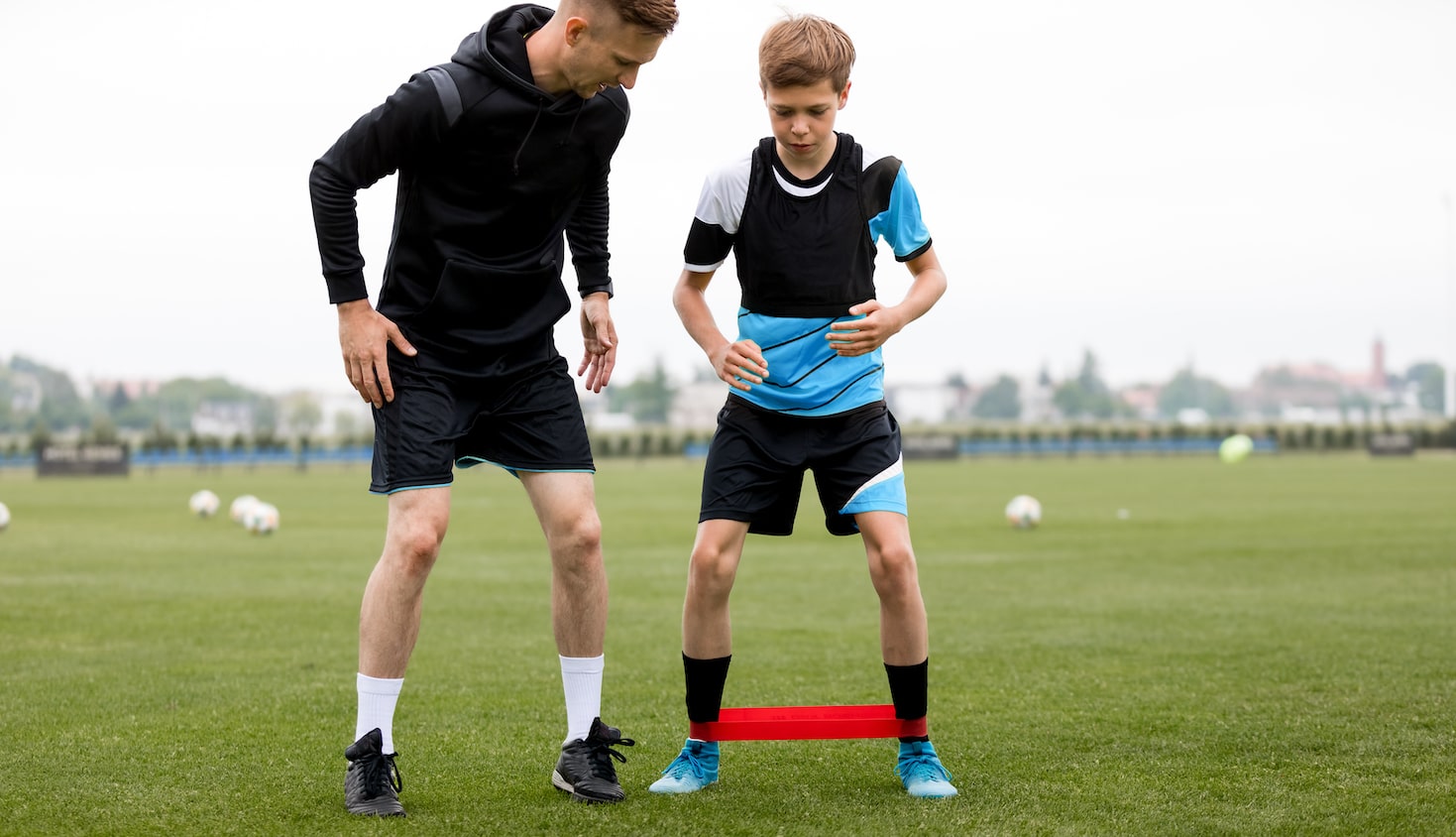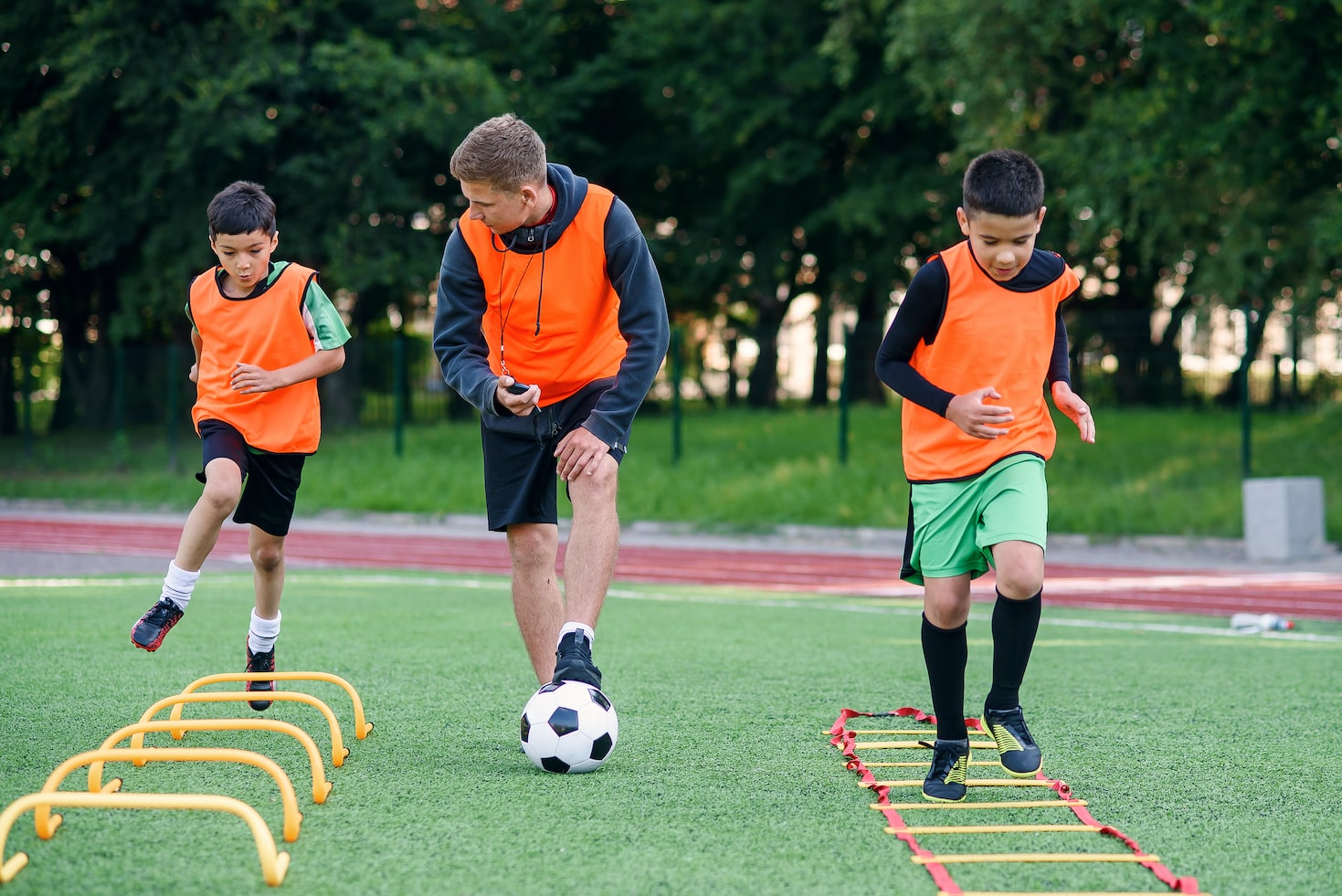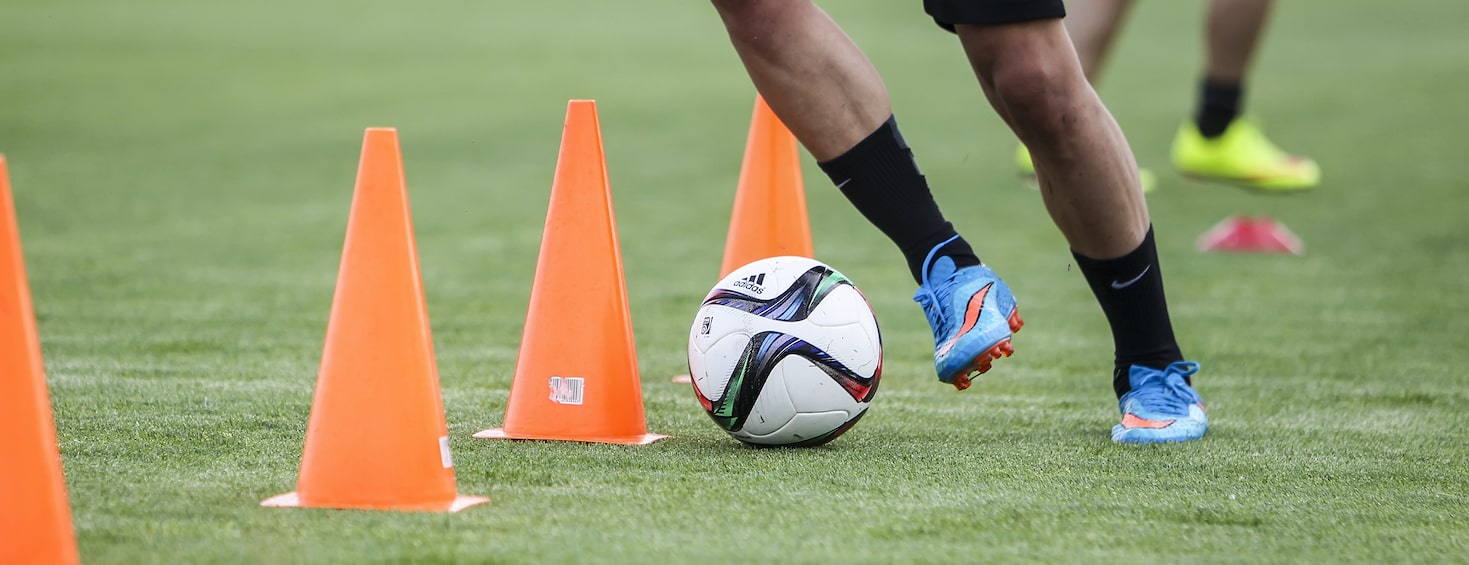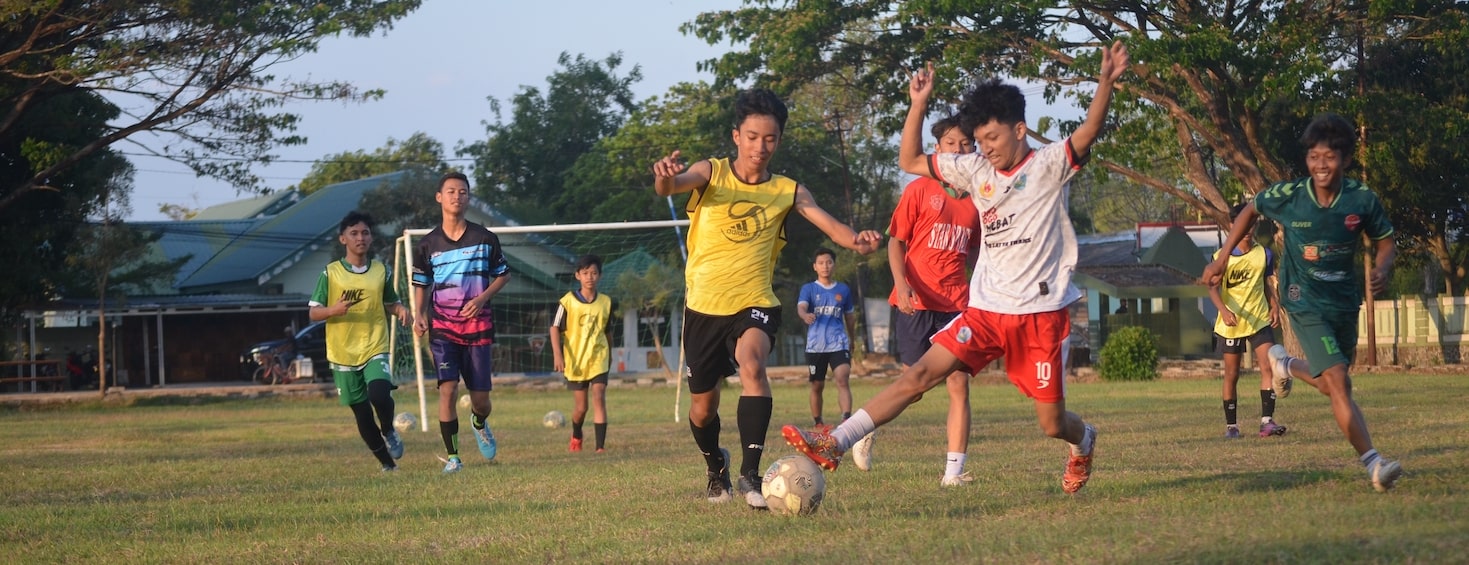The importance of having well-structured football coaching session plans
Having well-structured football coaching session plans is crucial for the success of any coach and their team. These practices provide a roadmap for the entire training session, ensuring that every minute is utilized efficiently and effectively. With a clear plan in place, coaches can focus on their objectives and ensure that they are covering all aspects of the game, from technical skills to tactical strategies.

One of the main reasons why well-structured coaching session plans are important is that they help coaches have the tools to stay organized and prepared. By having a detailed plan, coaches know exactly what drills and exercises they will be working on during each session. This allows them to gather the necessary equipment and set up the field or training area ahead of time, saving valuable training time. Coaches can also prepare any necessary coaching points or demonstrations, ensuring that they are able to effectively communicate their instructions to the players.
Additionally, well-structured coaching session plans help coaches maintain a consistent and progressive training program. By carefully designing sessions that build upon each other, coaches can ensure that their players, from junior to senior, are developing their skills and knowledge of the game in a systematic and logical manner. This helps avoid repetitive or disjointed training sessions and allows players to see their progress over time.
Furthermore, having a well-structured coaching session plan helps coaches manage their time effectively. By setting specific time limits for each drill or exercise, coaches can ensure that they are able to cover all the necessary aspects of the game without running out of time. This is particularly important when working with limited training time.
How having session plans can benefit both coaches and players
Having well-structured coaching session plans benefits both coaches, players and clubs in several ways. For coaches, these plans provide a clear framework to follow, ensuring that they cover all the necessary aspects of the game and stay organized throughout the training session. This allows coaches to focus on their objectives and deliver effective coaching points, maximizing the impact of their instruction. With a detailed plan in place, coaches can also track the progress of their players more effectively, identifying areas of improvement and tailoring future sessions to address specific needs.

For players, well-structured coaching session plans provide a sense of structure and purpose to their training. By following a planned session, players know what to expect and can mentally prepare for the tasks ahead. This helps create a focused and productive training environment, allowing players to fully engage in the drills and exercises. Additionally, having session plans that build upon each other allows players to see their development over time, boosting their confidence and motivation. They can witness their improvement firsthand and understand the importance of consistent training and effort.
Understanding the Basics of Football Coaching Session Plans
Defining what a coaching session plan is
A coaching session plan is a detailed outline or blueprint that outlines the structure and content of a football training session. It serves as a roadmap for coaches, providing a clear framework and direction for the session. A coaching session plan typically includes information such as the objectives of the session, the drills and exercises to be conducted, the duration of each activity, and any specific coaching points or instructions. It helps coaches stay organized, ensure they cover all the necessary aspects of the game, and maximize the impact of their instruction.
The key components of a session plan
The key components of a session plan include objectives, warm-up activities, drills or exercises, cool-down activities, and any necessary coaching points or instructions.
Objectives: The objectives of a session plan outline the specific goals and outcomes that the coach wants to achieve during the training session. These objectives should be clear, measurable, and relevant to the development of the players. For example, the objective could be to improve passing accuracy or to work on defensive positioning.

Warm-up activities: The warm-up is an essential part of any training session, as it prepares the players both physically and mentally for the upcoming activities. It should include dynamic stretching exercises, light jogging or running, and some ball work to get the players warmed up and ready to engage in the drills.
Drills or exercises: The main portion of the session plan consists of various drills and exercises that focus on specific aspects of the game, such as dribbling, shooting, or tactical formations. These drills should be chosen based on the objectives of the session and should be progressive, building upon each other to challenge the players and promote their development.
Cool-down activities: After the main drills and exercises, it is important to include cool-down activities to gradually bring the intensity of the session down and allow the players to recover. This can include static stretching, light jogging or walking, and debriefing or reflection on the session.
Coaching points or instructions: Throughout the session plan, it is important to include specific coaching points or instructions that guide the players.
Setting Goals and Objectives
The significance of setting clear goals and objectives for each session
Setting clear goals and objectives for each session is crucial in soccer coaching as it provides direction and focus for both the coach and the players. Without clear goals and objectives, training sessions can become disorganized and lack purpose, resulting in wasted time and limited player development. Clear goals and objectives help coaches plan and structure their sessions effectively, ensuring that they cover all the necessary aspects of the game and maximize the impact of their instruction.

Furthermore, setting clear goals and objectives allows coaches to track the progress and development of their players over time. By having specific objectives in mind, coaches can assess whether their players are improving in the desired areas and adjust their training plans accordingly. This helps to create a sense of accountability and motivation for both the coach and the players, as they can see tangible results and measure their growth. Additionally, clear goals and objectives provide players with a sense of purpose and direction during training sessions, allowing them to understand the purpose behind each drill or exercise and stay engaged throughout the session. This enhances their focus, commitment, and overall learning experience.
Tips on how to effectively set goals
When setting goals for your soccer coaching sessions, it is important to follow the SMART model. SMART stands for Specific, Measurable, Achievable, Relevant, and Time-bound. By using this framework, you can ensure that your goals are clear, attainable, and trackable. Here are some tips on how to effectively set SMART goals for your coaching sessions:
1. Specific: Be clear and precise about what you want to achieve in each session. Instead of setting a vague goal like "improve passing," specify the aspect of passing you want to focus on, such as "improve accuracy in short passes."
2. Measurable: Set goals that can be quantified or measured. This allows you to track progress and determine whether the goal has been achieved. For example, instead of saying "improve defending," set a measurable goal like "reduce the number of goals conceded per game by 20%."
3. Achievable: Make sure your goals are realistic and attainable within the given time frame. Consider the skill level and abilities of your players when setting goals. Setting overly challenging goals can lead to frustration and demotivation. Start with smaller, achievable goals to build confidence and gradually increase the difficulty.

4. Relevant: Align your goals with the overall objectives of your team or individual players. Ensure that the goals you set are relevant to the specific needs and areas of improvement for your team. For example, if your team struggles with ball control, setting a goal to improve dribbling.
5. Time-bound: Set a specific time frame for achieving each goal. This helps create a sense of urgency and keeps both the coach and players accountable. By having a deadline, it allows for better planning and organization of training sessions. For example, instead of saying "improve shooting accuracy," set a goal to "increase shooting accuracy by 10% within the next four weeks."
Warm-up Drills
Importance of warm-up drills and their impact on injury prevention
Warm-up drills are an essential component of any soccer coaching session. Not only do they prepare the players physically for the demands of the game, but they also play a crucial role in injury prevention. Warm-up drills help increase blood flow to the muscles, making them more flexible and less prone to injury. They also activate the neuromuscular system, improving coordination and reaction time, which can prevent accidents on the field.
One important aspect of warm-up drills is the activation of the core muscles. The core muscles, including the abdominals, lower back, and hips, provide stability and support to the entire body. By engaging these muscles during warm-up exercises, players can improve their balance and reduce the risk of strains or sprains. Additionally, warm-up drills that involve dynamic stretching, such as leg swings and high knees, can increase joint mobility and flexibility, further reducing the likelihood of injuries during the game.

Different types of warm-up exercises and their benefits
There are various types of warm-up exercises that soccer coaches can incorporate into their training sessions to maximize the benefits for their players. Here are a few examples:
1. Dynamic stretching: Dynamic stretching involves active movements that mimic the actions performed during the game. These exercises help increase range of motion, improve muscle elasticity, and enhance joint mobility. Examples of dynamic stretching exercises include leg swings, arm circles, high knees, and walking lunges. Dynamic stretching can also help players mentally prepare for the game by activating their muscles and increasing their focus.
2. Agility drills: Agility drills focus on improving players' quickness, reaction time, and change of direction abilities. These drills usually involve cones or agility ladders to create a series of movements that challenge players' coordination and footwork. Examples of agility drills include shuttle runs, ladder drills, and cone drills. By incorporating agility drills into warm-up sessions, coaches can help players warm up their muscles while also enhancing their agility and coordination skills.
3. Ball control exercises: Ball control exercises are particularly beneficial for players who struggle with their ball handling skills. These exercises involve various techniques such as dribbling, passing, and receiving the ball. By incorporating ball control exercises into the warm-up routine, coaches can help players improve their touch, control, and overall comfort with the ball. These exercises also help players develop their spatial awareness and decision-making skills, which are essential on the field.
Tips for designing effective warm-up drills
Designing effective warm-up drills is crucial for maximizing the benefits of a soccer training session. Here are some tips to help coaches create engaging and productive warm-up drills:
1. Consider the specific needs of the players: Before designing warm-up drills, coaches should consider the age, skill level, and position of their players. Tailoring the warm-up drills to meet the specific needs of the players will ensure that they are adequately prepared for the session ahead.
2. Incorporate a variety of exercises: To keep the warm-up session interesting and engaging, it is essential to incorporate a variety of exercises. This can include dynamic stretching, agility drills, ball control exercises, and small-sided games. By including a mix of activities, coaches can target different aspects of the game and cater to the diverse needs of their players.

3. Start with low-intensity activities: Warm-up drills should gradually increase in intensity to avoid any risk of injury. Begin with low-intensity exercises, such as jogging or light stretching, to increase blood flow and elevate the heart rate. As the warm-up progresses, gradually introduce more challenging activities to prepare the muscles and joints for the demands of the training session.
4. Focus on specific muscle groups: Design warm-up drills that specifically target the muscle groups used during soccer. For example, incorporate exercises that activate the lower body, such as lunges or squats, to warm up the leg muscles.


Improve Your GameJust 1.99 p/m
Exclusive drills and sessions, get involved today!
- 100’s of Drills
- Coach to Camera Videos
- Sessions from Pro’s
- Industry Leading Advice
Conclusion
In conclusion, designing effective football coaching session plans is crucial for maximizing the benefits of a soccer training session. By considering the specific needs of the players, incorporating a variety of exercises, starting with low-intensity activities, and focusing on specific muscle groups, coaches can create engaging and productive sessions.
The warm-up drills not only prepare the players physically but also mentally, helping them improve their ball handling skills, spatial awareness, and decision-making abilities. These drills set the foundation for a successful training session, ensuring that the players are adequately prepared for the challenges ahead.

As a coach, it is important to continually assess and adapt the drills to meet the evolving needs of the players. By providing a well-rounded session, coaches can help their players develop their skills, enhance their performance, and reduce the risk of injuries.
Remember, a well-planned and executed football coaching session is the first step towards a successful soccer training session. So, put these tips into practice and watch your players thrive on the field!



Cupello
UEFA B Coach, FA Level 3, FA Youth Modules 1, 2 and 3, Coerver Youth Diploma, SPAIN: Catalan Football Federation Smart Football, USA: United Soccer Coaches diploma. Sports journalist for the Sunday Mirror published author of several volumes of coaching books & international lecturer on soccer.